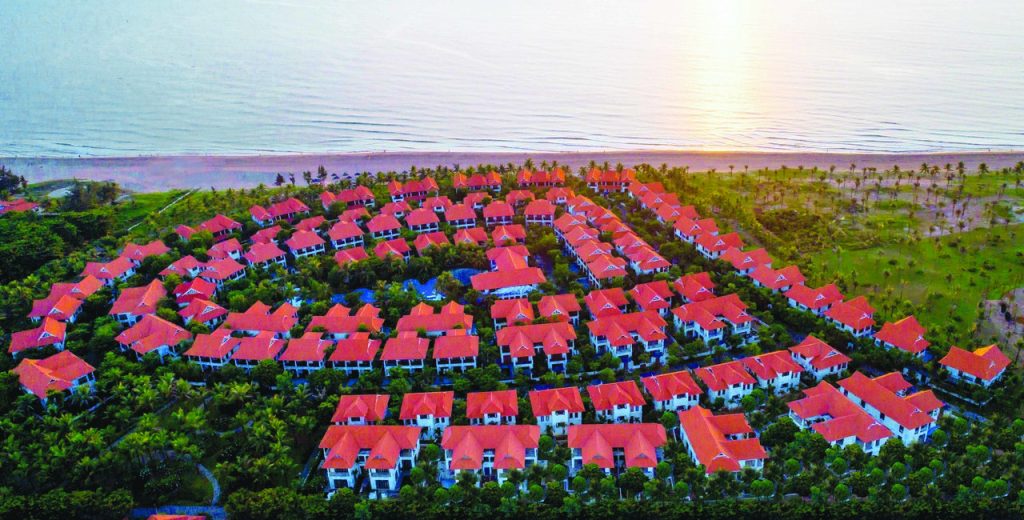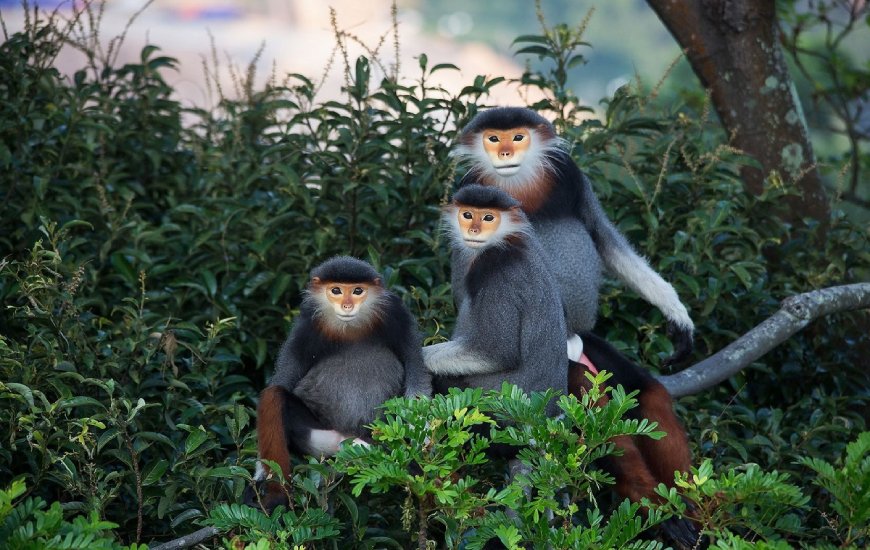Welcome to Hue, a city steeped in history, culture, and a certain undeniable elegance. If you’re venturing through Vietnam, a visit here isn’t just a stopover; it’s a journey back in time to the heart of the country’s last imperial dynasty. As Tuan Travel, helping you navigate the wonders of Vietnam, we’re thrilled to guide you through the magnificent tapestry that is Imperial Hue. This isn’t just about old buildings; it’s about understanding a legacy that continues to shape Vietnam today. Prepare to be captivated by tales of emperors, concubines, resilience, and artistry etched into stone and soul.
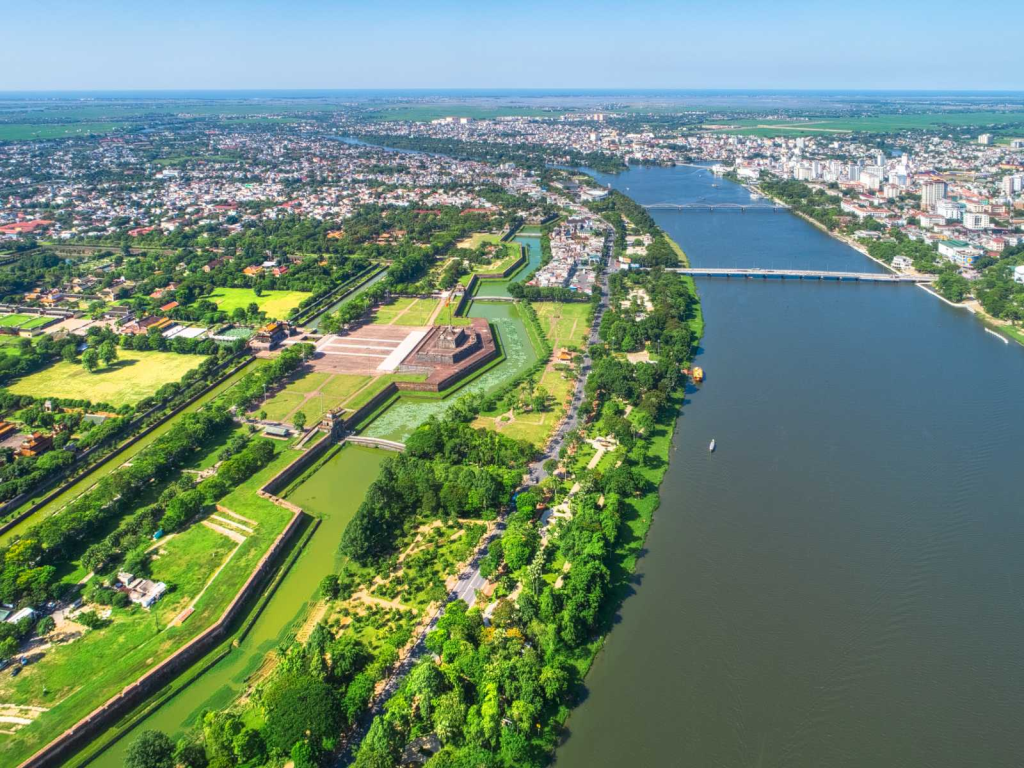
Understanding the Core: The UNESCO World Heritage Complex of Hue Monuments
In 1993, UNESCO named Hue’s Complex of Monuments a World Heritage site—recognizing it as a prime example of an eastern feudal capital. With its harmonious blend of architecture and nature, from the Perfume River to Ngu Binh Mountain, Hue reflects the legacy and cultural power of the Nguyen Dynasty, Vietnam’s last imperial rulers.
Defining Imperial Hue: More Than Just Buildings
“Imperial Hue” is more than stunning architecture—it’s a rich blend of the tangible and intangible. Beyond palaces and tombs lie royal music (Nhã Nhạc), court cuisine, Confucian ideals, and complex rituals that brought these spaces to life. Hue’s imperial monuments weren’t just structures, but vibrant stages for political, cultural, and ceremonial life under the Nguyen Dynasty.
The Citadel (Kinh Thành Huế): Epicenter of Nguyen Dynasty Power
At the heart of Imperial Hue lies the magnificent Citadel (Kinh Thành Huế), a colossal testament to Nguyen authority begun under Emperor Gia Long in 1805 and largely completed under Emperor Minh Mạng around 1832. Imagine a vast, square fortress, roughly 2km per side, with a perimeter stretching about 10 kilometers, all enclosed by thick ramparts and a wide, protective moat fed by the Perfume River. This wasn’t just a royal residence; it was the empire’s political, military, and administrative nerve center.
It’s essential to visualize its structure: the Citadel is the *outermost* enclosure. Within its walls lie two further, progressively more exclusive enclosures: the Imperial City (Hoàng Thành) and, at its very core, the Forbidden Purple City (Tử Cấm Thành). The Citadel’s design itself is fascinating – a blend of traditional Vietnamese architectural principles, Chinese imperial planning concepts (like aligning with cardinal directions), and strikingly European-style fortifications inspired by the French military engineer Vauban, evident in the projecting bastions and ramparts. This blend reflects Vietnam’s position navigating Asian traditions and increasing Western influence during the 19th century.

Enclosing History: The Scale and Purpose of the Outer Walls
The walls of Hue’s Citadel are huge and strong, built with earth, bricks, and stones to protect the city from attacks. Around the walls are defensive towers and ten gates, each with its own role. The most famous is Ngo Mon Gate, the main entrance used by the Emperor for important events. These walls were not just for defense—they also marked the sacred space of the royal city, separating it from the outside world.
The Imperial City (Hoàng Thành): Administrative and Ceremonial Heart
Step through the Noon Gate and enter the Imperial City (Hoàng Thành)—the heart of the Nguyen Empire. This inner area of the Citadel housed key government offices, including six ministries managing everything from finance to military affairs. It was also home to sacred buildings like Thế Miếu, a temple honoring past emperors, and Điện Thái Hòa (Palace of Supreme Harmony), where the Emperor held grand ceremonies, met foreign guests, and marked important events. Walking through the Imperial City offers a glimpse into the powerful, ritual-filled world of the royal court.

Architectural Language: Decoding Symbolism, Feng Shui, and Royal Aesthetics
The architecture of Imperial Hue is full of meaning—it’s not just about beauty or function. Every building was carefully designed to reflect royal power, harmony with nature, and deep cultural beliefs. The layout follows traditional Vietnamese styles mixed with Chinese influences, especially in symmetry, symbolism, and cosmology. Feng Shui played a key role in deciding where and how buildings were placed to bring balance and good fortune. In later years, French colonial styles also shaped some structures. Together, these elements created a royal space that connected the Emperor with the people and the heavens.
Harmony with Nature: The Role of Geography and Water Elements
A key principle of Imperial Hue is its integration with nature, guided by Feng Shui. The Citadel’s location was carefully chosen: the Perfume River brings positive energy, while Ngu Binh Mountain offers protection. This thoughtful use of natural elements is also seen in the Royal Tombs, designed with Feng Shui in mind. Water plays a vital role, too. The Citadel’s moat, canals, and artificial lakes were not only for defense and beauty but also balanced the energies of the mountains and buildings, ensuring harmony and prosperity.

Color, Motifs, and Materials: Signifiers of Rank and Belief
Every detail in Imperial Hue’s architecture carries meaning. Colors, motifs, and materials were carefully chosen to show rank, values, and royal beliefs.
- Color: Yellow was reserved for the Emperor, seen on royal robes and yellow-glazed roof tiles. Purple and red marked high status, linked to the Forbidden Purple City. Blue and green were used for officials and decorations.
- Motifs: Common symbols told powerful stories. Dragons stood for the Emperor and power. Phoenixes represented the Empress and beauty. The unicorn (Lân) symbolized peace and wisdom. Bats meant happiness, while cranes, peaches, and pine trees symbolized long life. These images were carved or painted onto roofs, pillars, and royal clothing.
- Materials: Expensive, strong woods like ironwood were used for buildings. Glazed roof tiles came in bold colors—yellow, blue, green. Stone formed the base of temples, bridges, and monuments. Lacquerware with mother-of-pearl showed fine artistry.
These elements weren’t merely decorative; they were integral to the architectural language, constantly reinforcing the social order, expressing philosophical ideas, and creating an environment imbued with imperial legitimacy and cultural significance.
(Image: Close-up of ornate roof decorations featuring dragons or phoenixes and colourful glazed tiles)
Journey to Eternity: The Majestic Royal Tombs of the Nguyen Emperors
Southwest of the Citadel, along the Perfume River, lie the Royal Tombs of Hue—grand resting places of seven Nguyen emperors. More than burial sites, these tombs were built as eternal palaces, reflecting each ruler’s personality and legacy. Set in serene hills and pine forests, they show a deep link between nature, the afterlife, and ancestor worship in Vietnamese culture.
Tomb of Gia Long: Austere Grandeur at the Dynasty’s Origin
As the tomb of the dynasty’s founder, Emperor Gia Long (reigned 1802-1820), this site feels different. Located relatively far from the city, it occupies a vast, serene landscape encompassing 42 hills. The architecture is simpler, more austere, and arguably more integrated with the natural setting compared to his successors’ tombs. There’s a sense of rugged grandeur. Notably, the burial area itself isn’t heavily walled but features the unique sight of the parallel tombs of Emperor Gia Long and his primary wife, Empress Thua Thien Cao, placed side-by-side within a simple enclosure. Its significance lies in being the first, setting a powerful precedent but with a less formalized structure than later tombs.
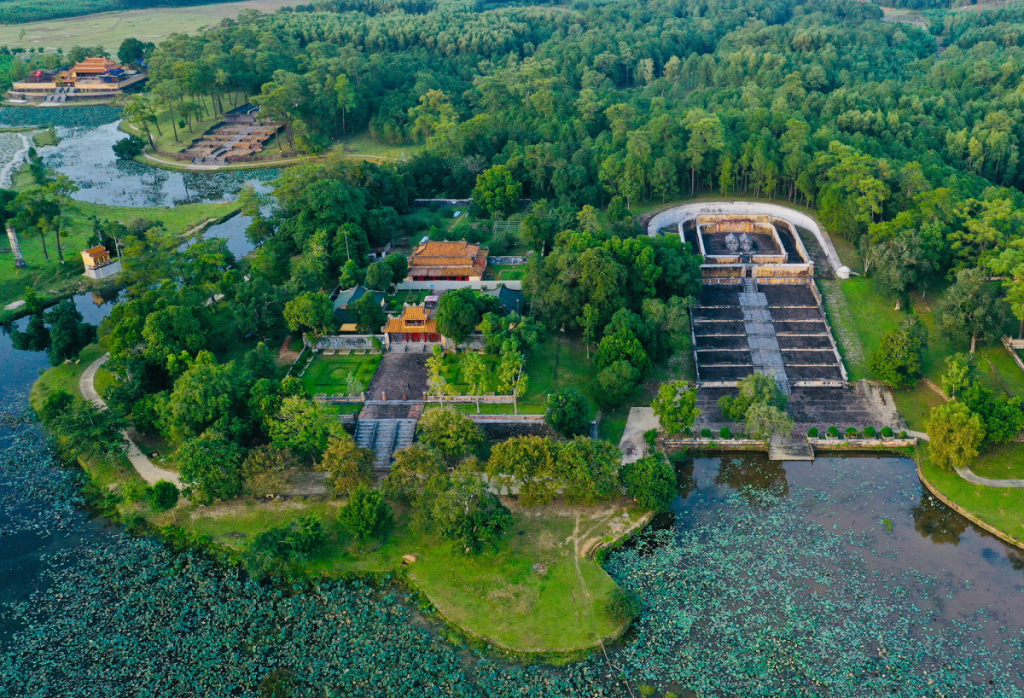
Tomb of Minh Mạng: Epitome of Symmetry and Confucian Order
The tomb of Emperor Minh Mạng (1820-1841) is regarded as one of the most beautiful and architecturally perfect of the Nguyen tombs. Built between 1840 and 1843, it follows a 700-meter-long axis (the Thần Đạo or Spirit Path). Visitors pass through grand gates, statue courtyards, temples, serene lakes, and the elegant Minh Lau Pavilion before reaching the burial mound. The tomb’s perfect symmetry and the blend of architecture with tranquil gardens and pine forests create a peaceful, majestic atmosphere.

Tomb of Tự Đức: A Poetic Retreat Reflecting the Emperor’s Soul
The tomb of Emperor Tự Đức (1847-1883), built between 1864 and 1867, contrasts with other Nguyen tombs. It served as both a retreat and a final resting place for the emperor. The layout is more romantic, winding around the scenic Luu Khiem Lake. Key highlights include the Xung Khiem Pavilion for poetry and relaxation, and the Minh Khiem Duong, one of Vietnam’s oldest theatres. The Stele Pavilion holds a stone tablet inscribed with Tự Đức’s reflections on his reign and personal regrets. The entire tomb complex feels like a tranquil, poetic garden palace.
Tomb of Khải Định: Lavish Fusion of Vietnamese and European Styles
The tomb of Emperor Khải Định (1916-1925), completed in 1931, stands out with its dramatic location on a steep hillside. Smaller in size but rich in decoration, it blends traditional Vietnamese architecture with French Baroque and Art Deco styles. The tomb features intricate mosaics made of colored glass and porcelain, especially in the Thiên Định Palace. With its dark, gothic, and opulent design, it offers a unique contrast to earlier tombs, reflecting Vietnam’s complex cultural mix under French rule.
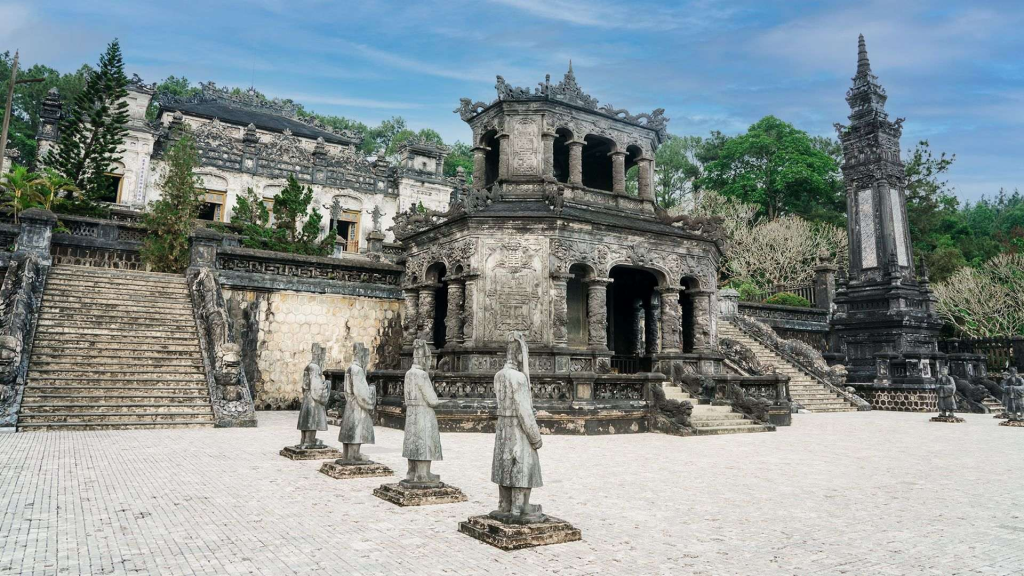
The Soul of the Court: Experiencing Hue’s Intangible Imperial Heritage
Having explored the magnificent physical structures – the Citadel and the Tombs – let’s now delve into the intangible soul that animated them. As we’ve touched upon, Imperial Hue’s significance isn’t confined to its architecture; it resides equally in the vibrant cultural traditions nurtured within the court. Understanding these living arts provides a richer, more complete picture of the Nguyen Dynasty’s world.
We’ll focus on three key facets of this intangible heritage: the unique Royal Court Music (Nhã Nhạc), the incredibly refined Royal Cuisine (Ẩm thực Cung Đình), and the solemn Royal Festivals and Rituals that punctuated the court’s calendar.
Nhã Nhạc (Hue Royal Court Music): The Sound of Ceremony (UNESCO Intangible Heritage)
Nhã Nhạc, or “elegant music,” was central to court life in Imperial Hue, used in ceremonies and rituals. UNESCO recognized it in 2003 as an Intangible Heritage. Featuring percussion, wind, and string instruments, it was performed during coronations, funerals, and banquets. Today, visitors can enjoy live performances at venues like the Duyệt Thị Đường Royal Theatre in Hue, connecting them to the imperial past.
Ẩm thực Cung Đình (Royal Cuisine): Culinary Artistry and Imperial Etiquette
Imperial Hue wasn’t just about visual and auditory splendor; it was also a center of extraordinary culinary refinement. Royal Cuisine (Ẩm thực Cung Đình) represents the pinnacle of Vietnamese gastronomy, developed over centuries to serve the exacting tastes and symbolic needs of the emperors and the court. Its core principles revolved around:
- Meticulous Preparation: Dishes required complex techniques and precise execution.
- Emphasis on Presentation: Food was treated as art. Intricate carving of fruits and vegetables into symbolic shapes (phoenixes, dragons, flowers), elaborate plating, and harmonious color arrangements were paramount.
- Balance: Adherence to philosophical principles of balance (yin-yang, five elements) guided the combination of flavors, textures, and ingredients, aiming for both taste and health benefits.
- Quality Ingredients: Only the finest, freshest, and sometimes rarest ingredients were used.
Eating was itself a ritual, reflecting royal refinement and status. Famous examples include multi-course banquets featuring dozens of small, exquisitely prepared dishes, delicacies like bird’s nest soup, and rice cakes (bánh) shaped into intricate forms. While true imperial banquets are a thing of the past, the legacy of Royal Cuisine strongly influences Hue’s modern food scene. Many restaurants in Hue specialize in offering multi-course meals inspired by royal traditions, allowing visitors a delicious taste of this sophisticated culinary heritage.
Royal Festivals and Rituals: Reconnecting with Imperial Traditions
Ceremony and ritual were the lifeblood of the Nguyen court, essential tools for legitimizing imperial rule, maintaining social order, and ensuring harmony between humanity, the heavens, and the earth. The imperial calendar was punctuated by numerous complex and solemn events. Among the most important were:
- Tế Nam Giao: The Sacrifice to Heaven and Earth, performed by the Emperor himself at the Nam Giao Esplanade (a dedicated ritual site south of the Citadel), was perhaps the most crucial ceremony, reinforcing the Emperor’s role as the intermediary between the divine and the human realms.
- Tế Xã Tắc: The Sacrifice to the Genies of Soil and Crops, held at the Xa Tac Esplanade, sought blessings for agricultural prosperity, vital for the kingdom’s well-being.
- Numerous other rituals marked dynastic anniversaries, birthdays, funerals, and agricultural milestones.
These events involved specific protocols, elaborate costumes, offerings, and performances of Nhã Nhạc. While the original imperial context is gone, Hue actively works to keep these traditions alive. The biennial Hue Festival often features impressive reenactments of key ceremonies, like the Nam Giao Sacrifice or royal processions, offering contemporary audiences a vivid glimpse into the symbolic world and ritualistic grandeur of Imperial Hue.
The Nguyen Dynasty Context (1802-1945): The Shapers of Imperial Hue
To truly appreciate the magnificent sites and rich culture of Imperial Hue, it’s essential to understand the historical context – the story of the Nguyen Dynasty itself. Ruling from 1802 until 1945, they were Vietnam’s last imperial family, and it was under their reign that Hue rose to prominence as the national capital and saw the construction of the incredible complex we explore today.
Understanding their rise to power, their consolidation of the nation, their cultural achievements, their complex interactions with burgeoning Western colonial powers (particularly France), and their eventual decline provides the necessary backdrop against which the stones and traditions of Imperial Hue gain their full meaning. This historical thread weaves through everything you see and experience in Hue.
The Rise to Power and Establishment of Hue as Capital
The Nguyen family had ruled southern Vietnam for centuries. After defeating the Tay Son forces with French help, Nguyen Anh unified the country in 1802, becoming Emperor Gia Long. He chose Hue (formerly Phú Xuân) as the new capital for its strategic location, breaking from the northern capital tradition. Hue was the Nguyen lords’ power base, offered defensive advantages, and its landscape, with the Perfume River and Ngu Binh Mountain, was considered auspicious according to Feng Shui, ensuring the dynasty’s longevity and prosperity.
Golden Age vs. Colonial Pressures: Navigating Change and Conflict
The early Nguyen Dynasty (1820-1883), particularly under Emperors Minh Mạng, Thiệu Trị, and early Tự Đức, was a time of cultural growth, with the completion of the Citadel, grand tombs, and a refined Confucian system. Hue flourished as the empire’s heart. However, Western powers, particularly France, increasingly pressured Vietnam. After French attacks on Da Nang and Hue in 1883, the court signed treaties that reduced imperial power, turning the Nguyen emperors into figureheads and marking the decline of true imperial rule.
Daily Life and Hierarchy within the Imperial Walls
Life inside the Citadel, particularly within the Forbidden Purple City, was a world unto itself, governed by incredibly strict hierarchy and elaborate etiquette. At the apex was the Emperor, considered the “Son of Heaven” (Thiên Tử), whose word was law. Below him was a complex structure:
- **The Inner Court:** Comprised the Empress, numerous concubines (ranked by status), and royal children. Life here involved not just luxury but also intricate politics and rivalries.
- **The Outer Court:** Consisted of high-ranking mandarins (civil and military officials selected through rigorous Confucian exams) who ran the empire’s administration.
- **Eunuchs:** Occupied a unique position, castrated men who could serve the inner court directly, often wielding significant influence and access to the Emperor.
- **Guards and Servants:** Thousands of soldiers protected the Citadel, while countless servants attended to the needs of the vast imperial household.
Protocols dictated every interaction, from how one addressed the Emperor to the specific rituals performed daily. This highly structured, isolated environment fostered a unique court culture but also distanced the rulers from the realities faced by their subjects, particularly as colonial pressures mounted.
Imperial Hue Today: Visiting and Engaging with History
Fast forward to the present day, and Imperial Hue stands as one of Vietnam’s most important historical sites and a captivating destination for travelers from around the globe. The palaces may no longer house emperors, and the sounds of court ceremonies have faded, but the enduring spirit and magnificent structures remain, offering a powerful window into the past.
Visiting Imperial Hue today is an accessible and deeply rewarding experience. While respecting the historical significance and ongoing conservation efforts, you can walk the same paths as emperors and mandarins, marvel at the architectural ingenuity, and connect with the rich cultural tapestry of the Nguyen Dynasty. To help you make the most of your journey, here’s some practical information.
Practical Guidance: Tickets, Transportation, and Making the Most of Your Visit
Navigating your visit to the Imperial Hue complex is relatively straightforward with a bit of planning:
- **Tickets:** You can purchase tickets for individual sites (e.g., just the Citadel, or just one tomb) or opt for combination tickets covering several key sites (Citadel + main tombs), which usually offer better value if you plan to see multiple locations. Tickets can be bought at the entrance gates of the respective sites.
- **Transportation:** Getting between sites requires transport, as the tombs are located several kilometers southwest of the Citadel. Options include:
- Taxis or Grab (ride-hailing service)
- Cyclos (traditional three-wheeled bicycle taxis) – good for short distances around the Citadel, negotiate price beforehand.
- Motorbike rental (ensure you have appropriate licenses and insurance).
- Bicycle rental – a pleasant way to explore the Citadel area and nearby banks.
- Organized tours – often combine transport and a guide for major sites. (Consider Tuan Travel for reliable transport options between cities like Da Nang/Hoi An and Hue!)
- Within the vast Citadel complex itself, be prepared for significant walking, though electric buggy services are often available.
- **General Tips:**
- Dress respectfully, especially when entering temples and palaces (shoulders and knees covered).
- Stay hydrated, particularly during hot weather. Carry water.
- Wear comfortable walking shoes.
- Protect yourself from the sun (hat, sunscreen).
- Allow ample time – trying to rush through the Citadel or multiple tombs in one go can be overwhelming. Plan accordingly.
Why Imperial Hue Remains Vital: Its Place in National Identity and World Heritage
Imperial Hue is far more than just a collection of beautiful old buildings. It stands as a powerful symbol of Vietnam’s last dynasty, a crucial chapter in the nation’s long and complex history. It represents a unique peak of Vietnamese art, architecture, and court culture, shaped by centuries of tradition and interaction with neighboring cultures and later, with the West. Its value lies in its tangible structures – the Citadel, the tombs – and its intangible soul – the music, the cuisine, the rituals.
Globally recognized by UNESCO (Tìm hiểu thêm về Các Di Sản Thế Giới của UNESCO tại Việt Nam), Imperial Hue is a unique cultural landscape offering invaluable insights into East Asian feudalism, philosophical beliefs, and the enduring human quest for beauty, order, and connection with the divine. Its resilience through war and upheaval, and the ongoing dedication to its preservation, speak volumes about the enduring spirit of Hue and Vietnam. Concluding our comprehensive journey, we hope you leave with a deep appreciation for the richness, complexity, and vital importance of Imperial Hue – a treasure truly belonging to Vietnam and the world.
